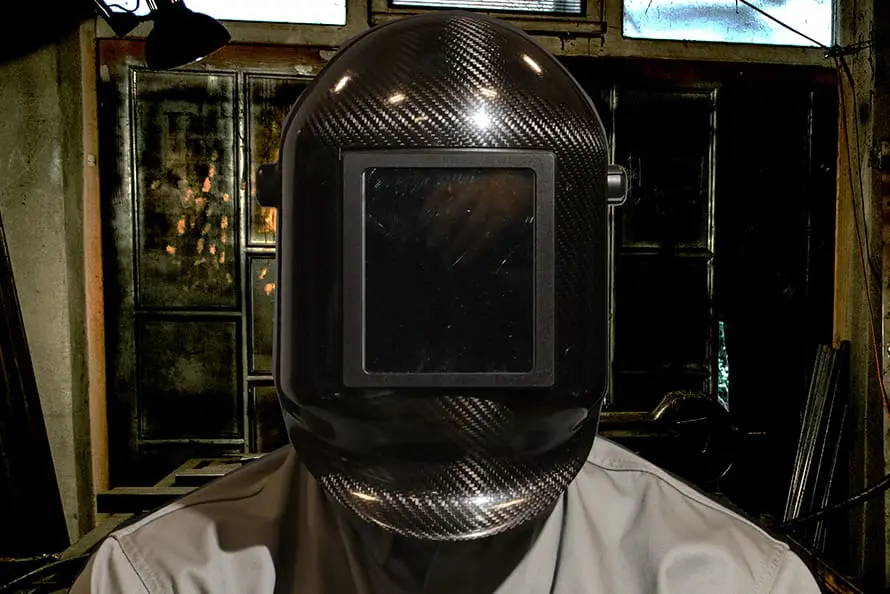Laser welding safety is an important consideration of this emerging welding technology. It’s a new, fast and efficient welding method that is rapidly entering the fabrication industry. It’s a widely applicable welding method across the spectrum of the metalworking industry, offering high precision and fast welding speeds. While not suitable for structural or thick steel welding currently, the technology is evolving at a fast pace. Initially though, it’s important to prioritise health and safety when using lasers, whether for cutting or welding.
In this comprehensive guide, we will explore the key safety considerations for laser welding. Focusing on eye and skin protection, specialised welding rooms, and compliance with relevant HSE regulations. Whether you’re an employer or a worker, understanding these safety measures is essential for maintaining a safe work environment.
Eye and Skin Protection
When working with laser welding, the intense light produced can cause serious damage to the eyes and skin. In order to ensure the safety of employees, it is crucial to supply suitable personal protective gear (PPE). It is necessary to wear laser safety glasses or goggles that meet the applicable standards, like BS EN 207:2017. These goggles block the particular frequencies of the laser in operation.
To avoid laser radiation reaching the skin, it is important to wear complete protective clothing and gloves. Choosing the correct PPE based on laser wavelengths and power output is crucial to ensure maximum protection.
For even more detailed information, check out our Handheld Laser Machine Safety Checklist here

Specialised Welding Rooms and Enclosures
When creating modular laser-welding rooms, it is important to take into account the risks associated with the high temperatures involved in the welding process. Suitable ventilation should be a priority, along with sufficient materials for the walls, ceiling and any windows. These specialised rooms then provide a laser-safe environment.
Multiple welders can be safely used in one location with a secure and interchangeable system. They feature:
- Special Glass Windows: These windows are rated to match the specific frequency of the welding equipment being used. They can withstand high temperatures and filter out the harmful wavelengths of the laser. With this glass in place, light can enter the booth safely, without exposing others to risk. These is also extremely useful for observation windows too.
- High-Performance Extraction Systems: Laser welding produces substantial amounts of heat. This necessitates the use of specialised extraction systems to ensure a secure and pleasant working atmosphere. These systems effectively remove heat and fumes generated during the welding process. This is a vital requirement for a worker using the machine for a prolonged period.
- Safety Interlocked Entry Doors: Specially designed entry doors with safety interlocks are essential in laser welding rooms. They work in conjunction with the laser welder to halt welding immediately upon opening, preventing accidental exposure to the laser beam. This ensures that no unexpected personnel can enter the welding booth without the welder’s knowledge.
- Safety Alert Warning Lights: Lights warn people in the room and nearby areas that the laser welder is being used. This visual cue helps to prevent unauthorised entry and ensures heightened awareness for all. They are a good visual indicator given the usually noisy environments of a fabrication workshop.
The true benefit of our modular system, is you can build a welding booth to suit your exacting requirements. Whether it’s to fit in a corner of a building, or to accommodate particularly large work pieces. We can either build you a tailored solution, or offer an “off-the-shelf” booth to suit your needs.

Compliance with Health and Safety Regulations
Compliance with health and safety regulations is crucial to ensure a safe working environment. Employers must adhere to the guidelines set by regulatory bodies such as the Health and Safety Executive (HSE). Key aspects of compliance include:
- Displaying Warning Signs: Clearly visible caution signs must be placed around restricted areas where Class 4 lasers are being used. These signs alert unauthorised or unaware personnel of the potential hazards they could face in these areas.
- Training: All employees should receive thorough instruction on laser safety, correct use of personal protective equipment, and emergency protocols. Training helps raise awareness, and ensures that individuals understand the risks associated with laser welding. All staff should receive this training, not just those who will be using the laser welder. This will ensure everyone is aware of the potential dangers involved.
- Risk Assessments: It is important to regularly carry out risk assessments to identify and reduce possible dangers. These assessments help determine appropriate control measures and ensure ongoing safety. Workshops, being noisy and hazardous, require ongoing safety assessments to ensure a secure environment.
Laser welding offers numerous advantages in the metalworking industry, but ensuring the safety of your workers is paramount. Employers should focus on protecting the eyes and skin to create a safe workplace. They should also set up special welding areas and follow safety rules.
Remember to provide adequate PPE, conduct risk assessments regularly, and invest in comprehensive training for all personnel involved. By adhering to these safety measures, you can protect workers, prevent accidents, and promote a culture of safety within your organisation.
If you’d like to discuss the safety requirements further, speak to one of our team on 01432 346 580, or email [email protected] for further assistance.
Published 7th September 2023


